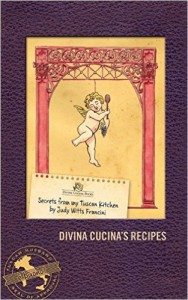With so many of your friends and family planning to travel to Italy in 2016, this holiday season is the perfect time for the gift of a book or two that will enrich their experience. Or, perhaps, these suggestions will serve as a reminder that you meant to catch up on a little reading yourself before the New Year.
Tuscan Traveler’s Nonfiction Selection
Mona Lisa: A Life Discovered by Dianne Hales
Over 500 years after her birth we are still talking about her. A genius immortalized her. A French king paid a fortune for her portrait. An emperor coveted her. Every year more than 9 million visitors trek through the Louvre to view her likeness. Yet while everyone recognizes her smile, hardly anyone knows her story or the story of women like her.
Mona Lisa: A Life Discovered, by Dianne Hales is a blend of biography, history, and memoir. It is a book of discovery: about the world’s most recognized face, most revered artist, and most praised and parodied painting; about the woman and the men behind the portrait; and about the author Hales, who undertook a journey of discovery, about herself, her beloved Florence, and a mystery that intrigues her. This is a must-read before visiting Florence. To walk in Mona Lisa’s footsteps with Dianne Hales in modern Florence imparts a sense of history and context enriching your time in the Renaissance city.
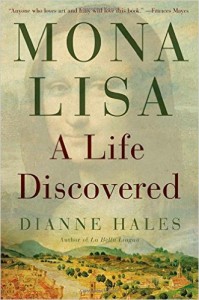
The Italians by John Hooper
British-born John Hooper took on the almost impossible task of explaining to the outside world what makes the Italians so unique. Hooper was not living under the Tuscan sun for the last fifteen years, but was reporting from Rome, so his new book, simply entitled The Italians, isn’t a view full of good food, beautiful people and quaint customs. It is a complex, but very readable, analysis of the culture, connecting the historical antecedents with the present day political complexities and economic woes.
This is the ideal book for anyone seeking to understand contemporary Italy and the unique character of the Italians. Fifteen years as a foreign correspondent based in Rome have sharpened Hooper’s observations, and he looks at the facts that lie behind the stereotypes, shedding new light on everything from the Italians’ bewildering politics to their love of life and beauty. Hooper persuasively demonstrates the impact of geography, history, and tradition on many aspects of Italian life, including football and Freemasonry, sex, food, and opera. Brimming with the kind of fascinating—and often hilarious—insights unavailable in guidebooks, The Italians will surprise even the most die-hard Italophile.
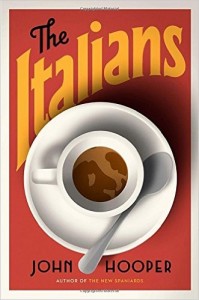
Italian Food Rules by Ann Reavis
Did the waiter in Rome sneer when you asked for butter for the bread or for a cappuccino after dinner? Did your Venetian grandmother slap your hand when you reached for the Parmesan cheese to sprinkle on her spaghetti alle vongole? Did the Florentine guest in your home turn pale when offered leftover pizza for breakfast? Did the fruit and vegetable vendor at the Mercato Centrale yell at you when you checked out the ripeness of his peaches or scooped up a handful of cherries? In Italy, they love making rules, although they seem to obey very few. When it comes to the national cuisine, however, the Italian Food Rules may as well be carved in marble. They will not change and are strictly followed. Visitors to Italy violate them at their peril. When in Italy, enjoy being Italian for a few days, weeks or months, by learning the Italian Food Rules (written by the Tuscan Traveler, herself), taking them to heart, and obeying each and every one of them.
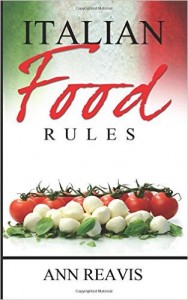
The Venus Fixers by Ilaria Dagnini Brey
In 1943, while the world was convulsed by war, a few visionaries―in the private sector and in the military―committed to protect Europe’s cultural heritage from the indiscriminate ravages of World War Two. And so the Allies appointed the Monuments Officers, a motley group of art historians, curators, architects, and artists, to ensure that the masterpieces of European art and architecture were not looted or bombed into oblivion. Often working as shellfire exploded around them, the Monuments men and women of Italy shored up tottering palaces and cathedrals, safeguarded Michelangelos and Giottos, and even blocked a Nazi convoy of stolen paintings bound for Göring’s birthday celebration. Sometimes they failed. But to an astonishing degree they succeeded, and their story is an unparalleled adventure with the gorgeous tints of a Botticelli as its backdrop.
This is the best book, among many (and a recent cinema adaptation), that describes the work of these brave men. Ilaria Dagnini Brey has firm command of art and military history and does an excellent job of evoking the atmosphere of a war-torn country. Brey learned of the “Venus Fixers” while researching the 1944 bombing of Ovetari Chapel in Padua, her hometown.
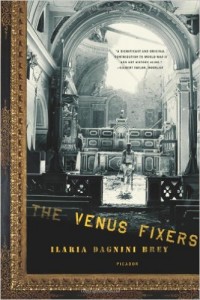
La Bella Lingua by Dianne Hales
A celebration of the language and culture of Italy, La Bella Lingua is the story of how a language shaped a nation, told against the backdrop of one woman’s personal quest to speak fluent Italian. For anyone who has been to Italy, the fantasy of living the Italian life is powerfully seductive. But to truly become Italian, one must learn the language. This is how Dianne Hales began her journey. In La Bella Lingua, she brings the story of her decades-long experience with the “the world’s most loved and lovable language” together with explorations of Italy’s history, literature, art, music, movies, lifestyle, and food in a true opera amorosa—a labor of her love of Italy. Like Dianne, readers of La Bella Lingua will find themselves innamorata, enchanted, by Italian, fascinated by its saga, tantalized by its adventures, addicted to its sound, and ever eager to spend more time in its company.
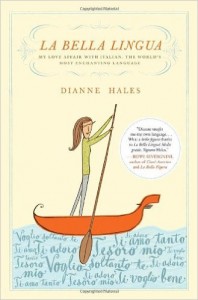
The Tigress of Forli by Elizabeth Lev
How do you create the perfect Renaissance superhero? Art historian, Elizabeth Lev, narrates the story in her fascinating book, The Tigress of Forlì. The story starts with a baby girl, Caterina Sforza, the illegitimate child of dissolute, but noble Milanese father and a drop-dead gorgeous mother. She is tutored in the classics, learns how to ride a horse and hunt, and masters the management skills of a great household. She is married at age thirteen (blessed by the Pope). She gives birth of her first child at fifteen. The cowardly husband is assassinated and all seems to be lost, but our pregnant superhero escapes her captors, takes up arms and captures the castle. All this happens before she turns thirty.
Then there is a steamy affair with a stable boy, a murder, and a bloody revenge. Machiavelli turns to negotiate peace, she marries a Medici, gives birth to the father of a future Tuscan Grand Duke, is widowed again, and finally loses her castle to Cesare Borgia. This, of course, is not the end of the story. She’s only 36 when Borgia drags her off to prison in Rome. (Spoiler alert: She lives to play with her grandchildren in Florence.)
Lev doesn’t fictionalize Caterina Riario Sforza de’Medici’s life. She doesn’t need to because this is a true case of truth being more amazing than fiction. No, she only had to spend years in the archives of Bologna, Florence and Rome, gathering the facts from the dusty pages of history and then spinning them out in a breathtaking narrative of the tale of a true superhero.

Italian Life Rules by Ann Reavis
Italians have spent a thousand years perfecting a certain way of living. The Tuscan Traveler was back again with Italian Life Rules in which she describes how while Italy has a reputation of not obeying rules, there are some hard and fast Life Rules that are known and followed.
Why shouldn’t you greet some people in Italy with a cheery “Ciao!” How do Italian women stride across cobblestones wearing stilettos with five-inch heels and never twist an ankle? Studies show that Italians tip less than other Europeans. Why is that? Tourists can’t go to just any Italian beach and spread a picnic lunch out on the sand during some months. It seems like every shopkeeper in Italy demands exact change. Before traveling to Italy, read about the Italian Life Rules to heighten your anticipation of Italian life and to prepare you for the inevitable joys and pitfalls of your visit. When in Italy, enjoy being Italian for a few days, weeks or months, by learning first-hand the Italian Life Rules for a greater appreciation of what it means to be Italian.
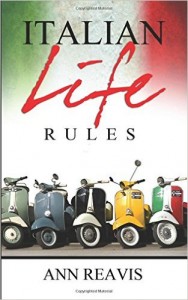
50 Places in Rome, Florence and Venice Every Woman Should Go by Susan Van Allen
The goal with 50 Places is to focus on the major cities—”Italy’s Big Three”—Rome, Florence and Venice. Susan Van Allen describes how these three cities are often overwhelming, and many travelers arrive with “must see” lists and then miss out on the fabulous unique spirits of each place. With so many guidebooks covering Rome, Florence, and Venice, 50 Places is for those seeking a more personal approach, as though they’re traveling with advice from a trusty girlfriend. For example, for the major sites, like the Uffizi in Florence, the author gives readers focus to see the art as glorifications of different aspects of femininity—from the sensual Goddess Venus to the compassionate Madonna—and adds in a “Golden Day” tip for the perfect place for dinner afterwards. She also steers readers to less crowded places in these popular cities, such as the stunning Palazzo Barberini in Rome, or to immersion experiences, such as maskmaking in Venice, that gives travelers the chance to have a hands-on experience of a beautiful tradition. Although written with women in mind, this guide will give men a different way to look at the usual travel destinations.
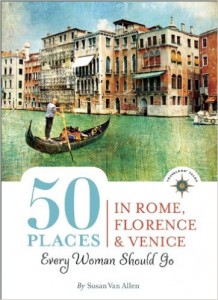
Secrets From My Tuscan Kitchen by Judy Witts Francini
To celebrate over 25 years in Italy, Judy Witts Francini of Divina Cucina self-published the collection of recipes she used for the past 20 years at her cooking school in Florence and wrote about in her blog Over a Tuscan Stove (now Divina Cucina).
The cookbook started out as a handwritten, spiral-bound, photocopied edition that she gave to her students. In 2008, she took the time to recreate it as a more permanent collection and developed a blog to go with it. Now it is out as an easy-to-use eBook.
There are almost one hundred of Judy’s favorite recipes, perfected in her classes and her home kitchen, in the pages of Secets From My Tuscan Kitchen.
